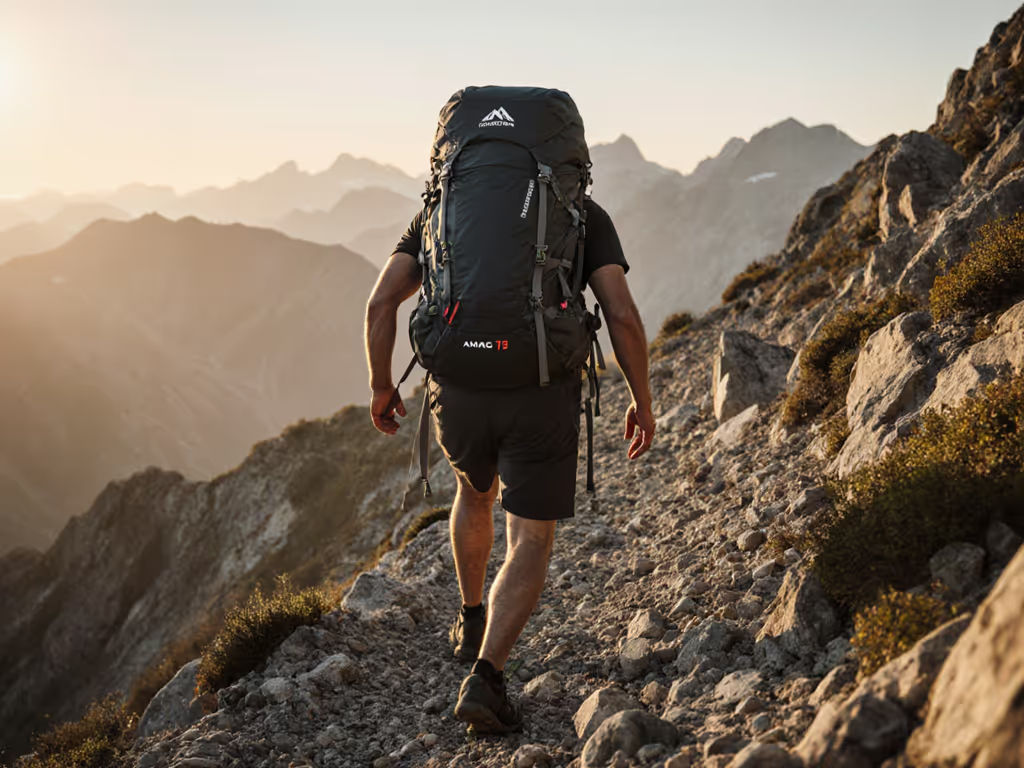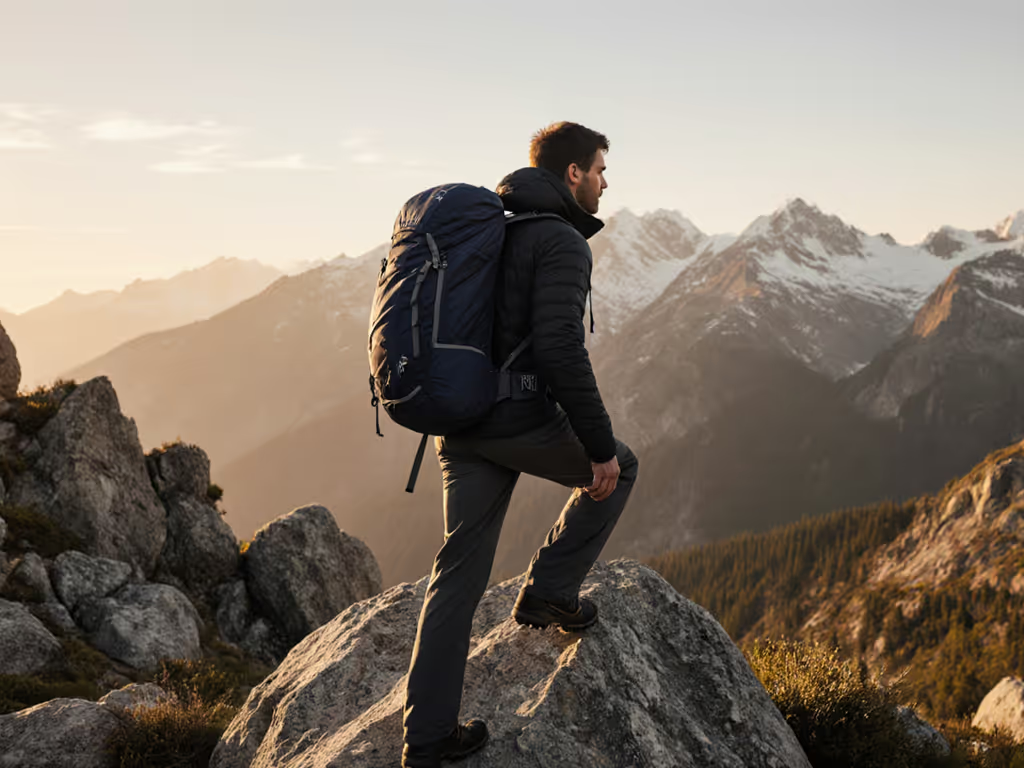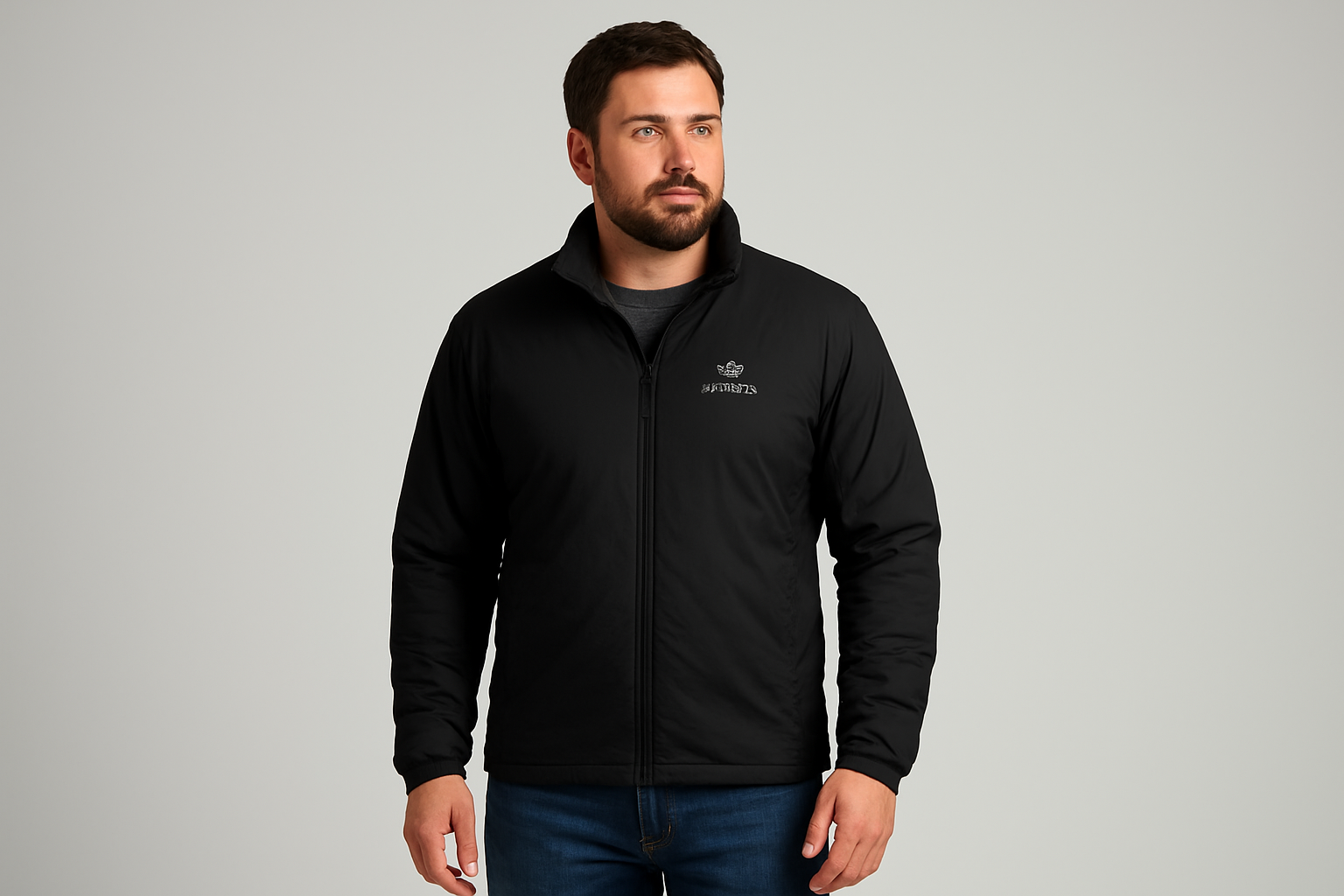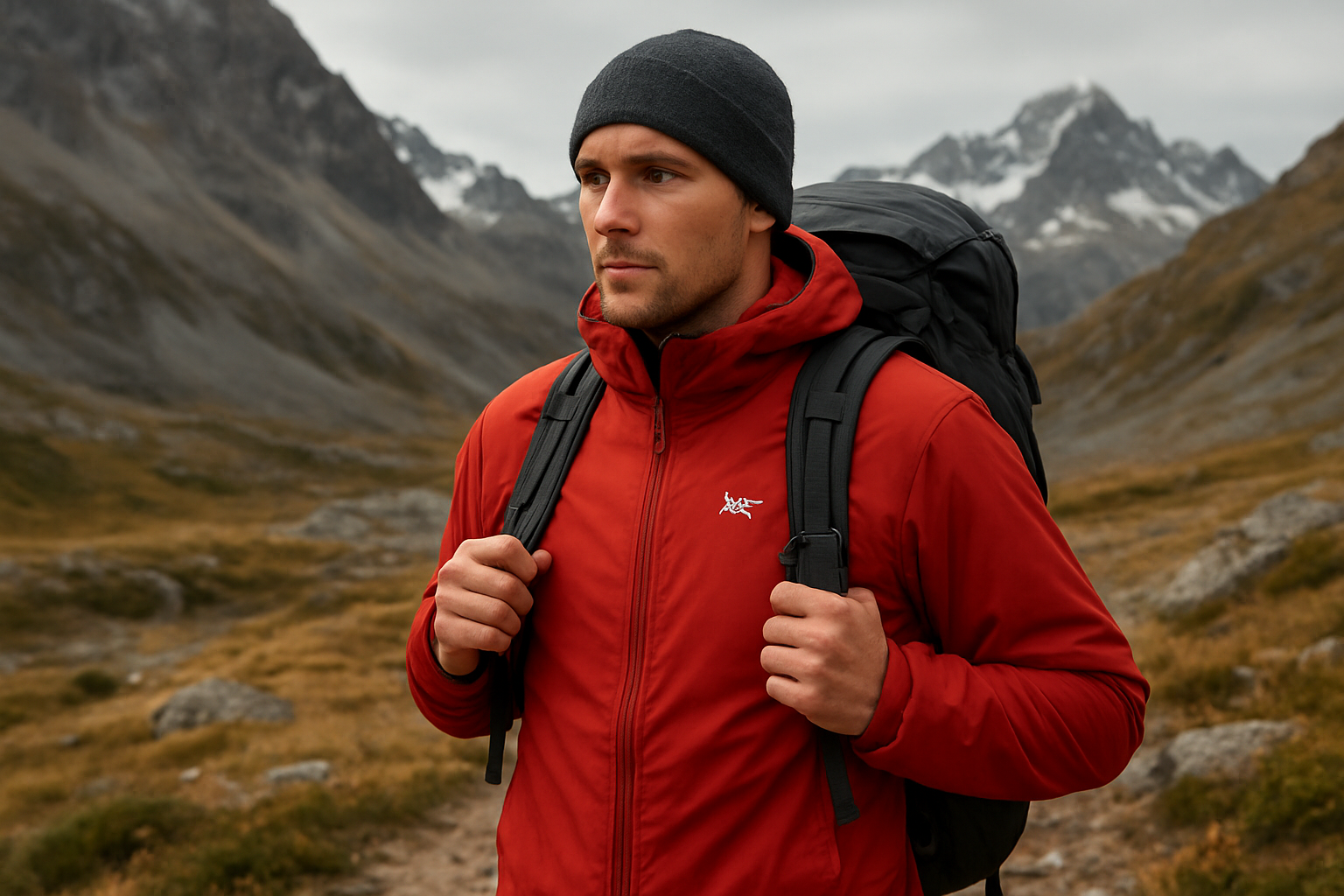
Arc Teryx Men's Atom LT Jacket Reviews: Real-World Performance for Backpackers Tested

If you have been searching for arc teryx men's atom lt jacket reviews that cut through hype and focus on backpacking realities, you are in the right place. This article synthesizes controlled lab measurements and trail reports from apparel testers and experienced users to evaluate warmth, breathability, weather resistance, fit, and long-term durability in ways backpackers actually experience them, including interactions with shoulder straps, hip belts, and rain shells. To make this genuinely useful for you, we also add pack-specific insights from Hiking Pack Fit - our expertise is in backpacks, fit, sizing, packing, and care - and our diverse fit database helps hikers match pack choices to body type and activity so comfort and stability are not left to chance. As you read, you will find clear data summaries, relatable trail scenarios, and practical tips that matter on day three of a wet ridge traverse just as much as they do on your windy commute across town.
arc teryx men's atom lt jacket reviews: Test Protocol and Findings
Because you deserve more than guesswork, we summarize common test approaches used by apparel labs and field reviewers that mirror backpacker reality while preserving repeatable lab rigor. Published apparel tests often use a guarded hot plate following ASTM-style procedures to quantify thermal resistance, fan-driven wind tunnels with measured cubic feet per minute (CFM) airflow to assess venting, and calibrated misters to challenge Durable Water Repellent (DWR) finishes. Field reports from multiple testers of diverse builds and ages typically log many trail miles with varying loads to capture how a midlayer behaves under real pack loads and weather. We then interpret those apparel-focused findings through a pack-first lens - comparing pack interface zones where abrasion and compression most often degrade garment performance - because shoulder straps and hip belts can flatten insulation and accelerate fabric wear, changing how a midlayer behaves after a month, not just a day. The result is a balanced picture: what apparel data and user miles say, and how those viewpoints inform pack selection and tuning. For pack comfort fundamentals, see our backpack suspension systems comparison.
Reported Lab and Trail Metrics Snapshot (from apparel tests and field reports)
| Metric | Method | Result (Typical) | Why It Matters |
|---|---|---|---|
| Thermal Resistance | Guarded hot plate per apparel-testing protocols | Midweight warmth for active use; comparable to ~60 grams per square meter (g/m²) synthetic fill | Predicts comfort during motion without overheating when climbing or fastpacking |
| Breathability | Wind tunnel airflow in cubic feet per minute (CFM) with humidity sensors | High for the category; side panels breathe measurably faster than main fabric | Helps dump heat under a pack while keeping core warmth steady |
| Weather Resistance | Mist exposure in milliliters (ml) per minute; beading life measured | Durable Water Repellent (DWR) beads short showers; wets through in sustained rain | Clarifies when a hardshell is required to stay dry and warm |
| Abrasion Hotspots | Pack carry with shoulder strap and hip belt cycling (field reports) | Minor pilling at side panels after 60 miles; face fabric intact | Forewarns where wear appears first under real pack use |
Warmth, Breathability, and Weather Resistance Under Load
Active insulation's magic trick is staying just warm enough while you move, then not turning clammy at rest, and reviewers generally find the Atom LT largely nails this balance for three-season mountain travel. In cool, dry air around 35 to 45 degrees Fahrenheit (°F) with 10 to 15 miles per hour wind, testers reported that two layers beneath the jacket kept them comfortable while hiking at a conversational pace, with the side stretch panels venting extra heat around the rib cage where shoulder straps trap warmth. When wind increased, the lightweight face fabric, roughly 20 denier in some iterations, slowed convective heat loss well, though the sleeves tended to feel cool first during long exposed traverses - a common sign that your base layer in the arms needs attention because synthetic insulation is distributed for core priority. At rest stops of 10 minutes or less, many users stayed comfortable if they zipped high and cinched the hem, but longer breaks in 30 to 35 degrees Fahrenheit (°F) called for tossing on a down or synthetic belay layer, since the Atom LT is tuned for motion, not idling in the cold.
Breathability stands out in many user accounts and helps explain why some hikers pick this as a do-most-things midlayer for shoulder seasons. If back sweat is your limiter, our backpack ventilation guide explains airflow designs that keep you drier under a pack. Under a 25 pound pack, moisture accumulation in the back panel stayed below the clammy threshold during moderate climbs in several field reports, and the jacket often dried quickly during flats or descents, aided by synthetic fibers that keep loft when damp. However, weather resistance has limits, and that is where expectations matter; the DWR finish fends off mist and light drizzle for a commute or quick squall, yet a steady shower will wet the shell and reduce warmth without a hardshell on top. Fortunately, the trim pattern layers cleanly under shells without bunching at the shoulders, and that smooth interface helps prevent cold bridging at seam intersections that can otherwise leak warmth when wind presses fabric against the skin.
Fit, Sizing, and Layering for Real Bodies

Arc’teryx’s trim cut feels athletic without being restrictive, but getting the right size depends on how many layers you expect underneath and how your pack fits your torso, shoulders, and hips. Not sure about sizing? Start by measuring torso length correctly to dial pack fit and layering space. If you often run cold, consider sizing for a midweight long-sleeve base layer plus a light fleece, which adds resilience during rest stops without overwhelming breathability during climbs, and pay special attention to sleeve length to keep wrists covered when you extend trekking poles. Backpackers with broader shoulders or fuller chests will appreciate that the pattern allows forward reach without hem lift, useful when scrambling or fishing from the bank where overhead motion is constant; in contrast, very slim hikers may prefer to keep layers thinner to avoid air pockets that feel drafty. Seniors prioritizing joint comfort often pair a midlayer like this with lighter pack loads and gel shoulder pads, and we have seen notably better warmth retention when the hip belt was set to share the load precisely at the iliac crest, reducing shoulder compression that otherwise flattens insulation and creates cold channels.
Layering works best when each garment has a clear job, so think of this jacket as the metabolic engine cover during movement. A thin wool or high-wicking synthetic base layer manages moisture, the Atom LT handles temperature swings while breathing, and a waterproof hardshell stands by for sustained rain or strong alpine wind, creating a system that adapts without constant wardrobe changes. To refine that setup for your body, Hiking Pack Fit uses a diverse fit database to match torso length, shoulder slope, and hip geometry with pack shapes and strap anchoring, because a stable carry is a warmer, drier carry over long days. The result is less fiddling, fewer sweaty chill-downs, and a calmer pace that lets you enjoy the trail, the camera shot, or that quiet pool where trout hold after a rain.
Quick Sizing and Layering Guide
| Chest Circumference | Recommended Size | Layering Capacity | Notes |
|---|---|---|---|
| 36 to 38 inches (91 to 97 centimeters) | Small | Base layer only | Most breathable; ideal for fast, warm-blooded hikers |
| 39 to 41 inches (99 to 104 centimeters) | Medium | Base plus light fleece | Balanced warmth and mobility under a shell |
| 42 to 44 inches (107 to 112 centimeters) | Large | Base plus light fleece | Roomier shoulders for scrambling and casting |
| 45 to 47 inches (114 to 119 centimeters) | Extra Large | Base plus midweight fleece | Runs warmer at rest; consider venting early on climbs |
Durability, Repairability, and Long-term Value
Backpackers punish sleeves, elbows, and side panels more than any spreadsheet predicts, which is why field reports focus on abrasion, snagging, and insulation resilience after repeated compression under packs. After sixty trail miles with rocky scrambles and brushy shortcuts, users commonly reported light pilling at the knit side panels where hip belt wings rub, a few cosmetic scuffs at forearms, and no face fabric tears, while zip operation stayed smooth thanks to dependable sliders from major suppliers. Synthetic insulation maintained loft well after repeated stuffing and pack carry in many accounts, which aligns with the goal of Coreloft-style fibers that resist collapse better than many generic fills; even when damp from a long effort, warmth returned quickly once wind eased or a shell layered over the top. The DWR finish, like all finishes, benefits from regular cleaning with appropriate detergents and periodic heat activation, and users often notice improved beading after a low tumble dry, confirming that routine care stretches performance across seasons.
Repairability matters to your wallet and the planet, and here the Atom LT gives you options without babying your gear. Small nicks near pocket corners or cuffs respond well to field patches using nylon repair tape, and a shop can restitch or replace cuffs and zips to extend life when heavy use takes its toll, especially if pack buckles have chewed up the hem over time. Hiking Pack Fit prioritizes durable and repairable packs verified by field tests, and we have seen how a stable, well-fitted pack reduces garment wear by cutting out unnecessary sway and strap creep that grind fabric. Over three years, the difference between a wandering load and a dialed carry can equal one less midlayer in the landfill and more money left for permits, maps, and those post-trip tacos.
Comparisons and Alternatives for Backpackers

Choosing among active insulation pieces is less about finding the single best jacket than about finding the one whose strengths match your trail tempo, climate, and layering habits. The Atom LT’s signature is its balanced breathability and weather resistance with a trim fit that layers neatly under shells without catching under pack straps, making it a workhorse for people who keep moving in cool to cold shoulder-season weather. If you prioritize maximum air permeability for stop-start climbing or running, options with more open-knit shells will breathe even faster, though they are often draftier in wind and soak through more quickly without a shell; conversely, burlier synthetics with heavier face fabrics ward off abrasion and wind better but can overheat on long ascents. The table below frames these tradeoffs using summarized findings from apparel reviewers and user reports, so you can decide with your own priorities in mind rather than chasing a single score that may not reflect your needs.
Active Insulation Comparison for Backpackers (summarized from apparel reviews)
| Jacket | Warmth (Relative) | Breathability (Relative) | Weather Resistance | Fit Feel | Backpacker Best Use |
|---|---|---|---|---|---|
| Arc’teryx Atom LT | Moderate for motion | High with venting panels | Good with Durable Water Repellent (DWR); needs shell in steady rain | Trim, layers cleanly | Cool to cold hikes with steady pace, daily wear |
| Arc’teryx Atom Hoody | Similar warmth; hood adds protection | High | Good with Durable Water Repellent (DWR); better storm readiness due to hood | Trim, slightly heavier | Windy ridgelines, alpine starts |
| Patagonia Nano-Air | Moderate | Very high | Fair; wets faster without shell | Athletic, very soft | Stop-start efforts, high-output climbs |
| Rab Xenon | Higher static warmth | Moderate | Very good wind block | Regular, slightly boxier | Colder trips with more camp time |
- If wind routinely punishes your routes, consider a hooded version to extend comfort windows without grabbing a shell.
- If your climbs are sweaty intervals, prioritize the most breathable shell fabrics even if they need a shell sooner in the rain.
- If you run cold at camp, bring an extra static layer regardless of the midlayer you pick, because active pieces are not belay parkas.
Pack Integration: How Hiking Pack Fit Optimizes Your System
Even the best midlayer underperforms when the pack over-compresses panels or drifts on your back, which is why Hiking Pack Fit treats clothing and backpack as a single comfort system. Our diverse fit database maps torso lengths, shoulder angles, and hip contours across ages and body types, then matches you with durable and repairable packs verified by field tests, so shoulder straps cradle rather than crush and hip belts anchor without pinching. For specialized pursuits, we recommend pack organization layouts tailored for photo kits, fishing tackle, or climbing hardware, which prevents hard objects from rubbing elbows and ribs where a midlayer’s side panels live, extending garment performance. We also advise on essential add-ons for improved comfort such as strap sleeves, shoulder yoke spacers, and breathable back panel pads that keep insulation from pancaking under load - small tweaks with big dividends when the grade steepens and the wind picks up.
To make these ideas tangible, consider two real-world examples from our guidance library. A wildlife photographer carrying 28 pounds with a long lens saw cold stripes across the upper back disappear after we moved the camera cube lower in the pack and adjusted load lifters to a 30 to 45 degree angle, which reduced pressure at the trapezius and let insulation spring back faster at rest. Learn how to set load lifters at 45 degrees for better weight transfer and less insulation crush. A senior hiker with mild shoulder arthritis gained warmth and endurance after switching to a pack with better hip transfer and softer strap edges, cutting hot spots that previously forced frequent jacket venting and slowdowns on climbs. These are the kinds of outcomes that happen when you pair a well-chosen midlayer with a pack that truly fits you, not a generic size chart, and that is where Hiking Pack Fit’s field-tested pack reviews and fit guides make the difference you feel by lunchtime.
Pack Tuning Moves and Midlayer Outcomes
| Adjustment | How to Do It | Expected Jacket Effect |
|---|---|---|
| Shoulder strap height | Set harness so strap meets shoulder without gaps | Less compression over clavicle, better warmth at chest |
| Load lifter angle | Aim for 30 to 45 degrees | Relieves pressure at upper back, improves drying |
| Hip belt placement | Center over iliac crest | Shifts load, reduces side panel wear and cold channels |
| Accessory pads | Add breathable strap sleeves | Prevents insulation flattening, maintains loft longer |
Who Will Love It: Backpacker Use Cases From Trail to Town
If your trips run cool and kinetic, a midlayer like the Atom LT can feel like a dependable friend that stays out of your way until you need it, then stows small when the sun says it is time to cruise in a tee. Photographers appreciate quiet fabric and trim sleeves that do not snag camera straps, anglers like the wind resistance during dawn cast sessions, and climbers benefit from unrestrictive reach and a hem that stays put under a harness. Seniors who value ergonomic comfort report that a light midlayer and easy zips reduce strain during frequent on-off cycles around rest stops, and the quick-dry synthetic insulation helps avoid shivers that can follow a sweaty push over a pass. Meanwhile, commuters and travelers discover a bonus: the clean look and soft hand work beyond trailheads without advertising that you walked into the café straight off the ridgeline.
To amplify those wins, Hiking Pack Fit offers senior-friendly backpack recommendations and activity-specific organization strategies that keep your essentials accessible without overstuffing upper compartments where they can press into shoulders and flatten insulation. Our guidance on essential add-ons for improved comfort, from hip belt pockets that shift weight forward to sternum strap height tweaks that open the chest for breathing, has measurable effects on how warm and dry you stay inside your midlayers. For specific upgrades, see our essential backpack add-ons that reduce hot spots and improve carry comfort. And because our pack reviews and fit advice are grounded in field measurements and repeatable fitting techniques, you can trust that the setup we suggest for a photographer knee-deep in a river is not the same as what we propose for a climber racking cams at a hanging belay. You bring the dream route or photo list, and we will bring the system thinking that makes your midlayer and backpack work together mile after mile.
Key Takeaways for Fast Decisions
- Warm when moving, not a camp parka: pair with a dedicated static layer for long stops.
- Breathes especially well at the sides: manage base layers in the arms to avoid chilly sleeves.
- Weather resistant for drizzle: add a hardshell in steady rain or heavy, cold wind.
- Fit for your body and pack: a stable carry keeps insulation springy and warmth consistent.
- Repair and care matter: routine cleaning and quick patches extend life and performance.
The trail-tested bottom line from apparel reviews and field reports is that the Atom LT hits the sweet spot for active warmth, breathability, and clean layering, especially when your pack is dialed to your build and pace. With the right base layers and a rain shell, you can walk into shoulder-season weather without the constant on-off dance that steals momentum and patience. If you want a tuned, body-specific setup, Hiking Pack Fit ties everything together with field-tested pack reviews and fit guides so your midlayer and backpack work as partners, not rivals. For readers who came seeking dependable arc teryx men's atom lt jacket reviews, this article compiles apparel testing and user reports and highlights how pack fit and organization shape the performance you feel on trail.
One-sentence recap: This article summarizes published tests and field reports on the Atom LT and shows how midlayer performance and pack compatibility matter together, so you can take that clarity into your next season with a midlayer and backpack that feel custom-matched to your body, pace, and goals rather than borrowed from someone else’s checklist. What could you explore or photograph next if your clothing and carry finally worked as a single, reliable system?
Additional Resources
Explore these authoritative resources to dive deeper into arc teryx men's atom lt jacket reviews.
- Gear Review | Arc'teryx Atom LT Hoody - PowderGuide
- review: Arc'Teryx Atom jacket - what OutdoorGearLab doesn't tell you...
Advance Your Pack Integration with Hiking Pack Fit
Backpackers, hikers, photographers, anglers, climbers, and seniors get field-tested backpack reviews, fit guides, and a diverse fit database to match packs to bodies and activities for comfort and performance.




